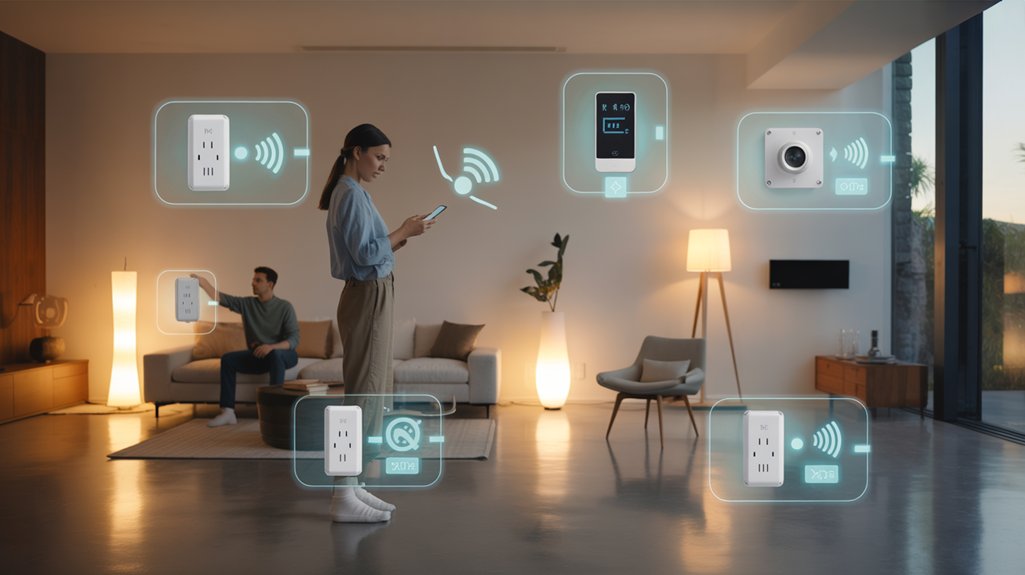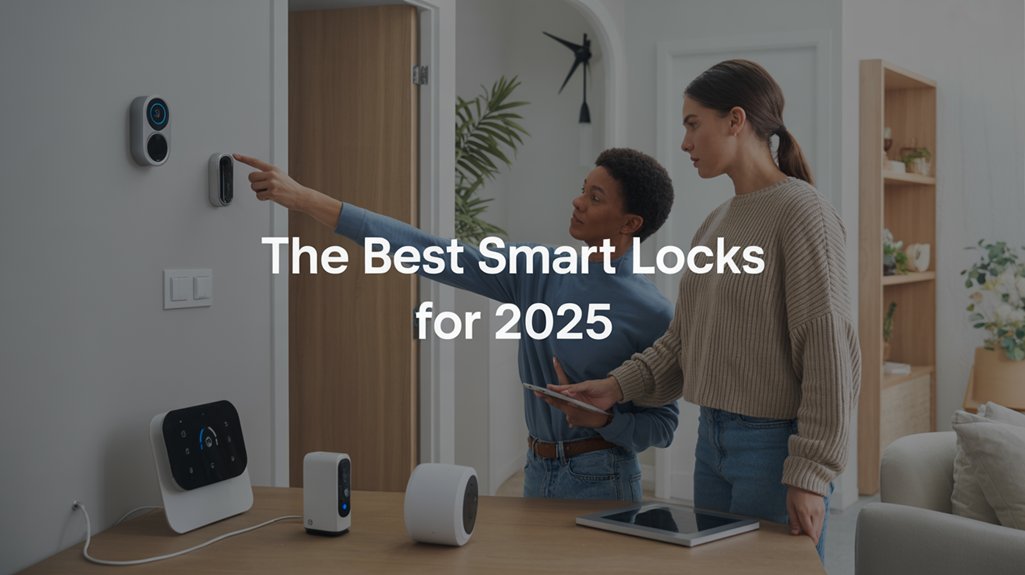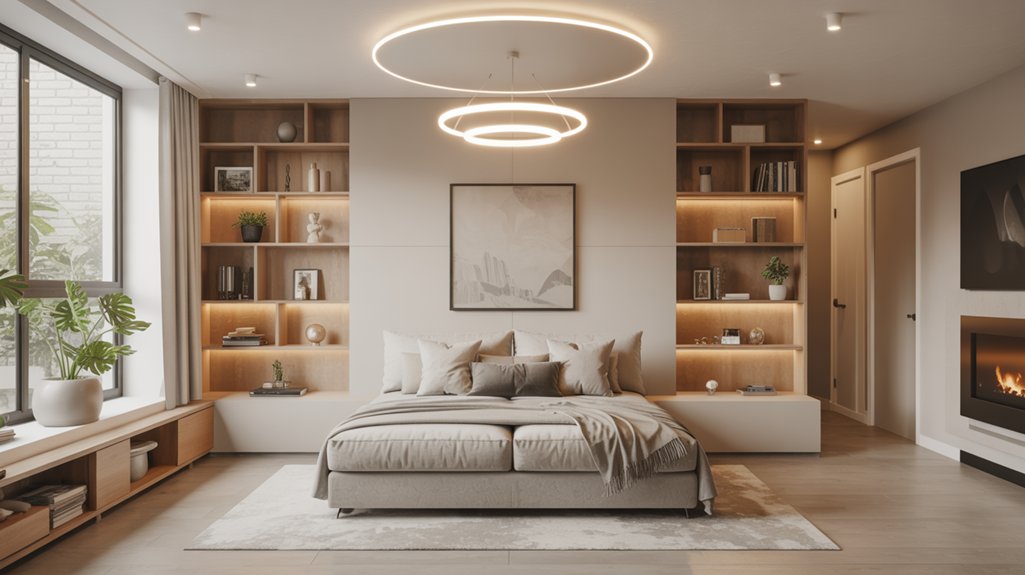You’ll find the Emporia 15W smart plug leading 2025’s market with intuitive energy monitoring and comprehensive home screen controls. For dual outlets, HBN’s compact design offers independent control at better value than Enbrighten’s wider alternative. Budget-conscious users can rely on TP-Link’s Kasa Mini for solid automation without energy tracking. Apple users benefit from Leviton’s native HomeKit and Matter compatibility, while GE Cync delivers premium app experiences with elegant interfaces and advanced scene creation for comprehensive home automation potential.
Key Takeaways
- Emporia 15W smart plug leads 2025 with intuitive energy graphs, device status monitoring, and comprehensive home screen interface.
- HBN smart plug offers dual independently controllable outlets in compact design, maximizing functionality without sacrificing space.
- TP-Link Kasa Mini delivers strong automation features, scheduling, and voice control at budget-friendly prices for basic needs.
- Leviton D215P-2RW provides Matter compatibility and native HomeKit support for seamless Apple ecosystem integration with Siri control.
- GE Cync offers premium app experience with elegant UI, device grouping, and advanced scene creation for sophisticated automation.
Top Smart Plug Picks: Overall Performance and Dual-Outlet Champions
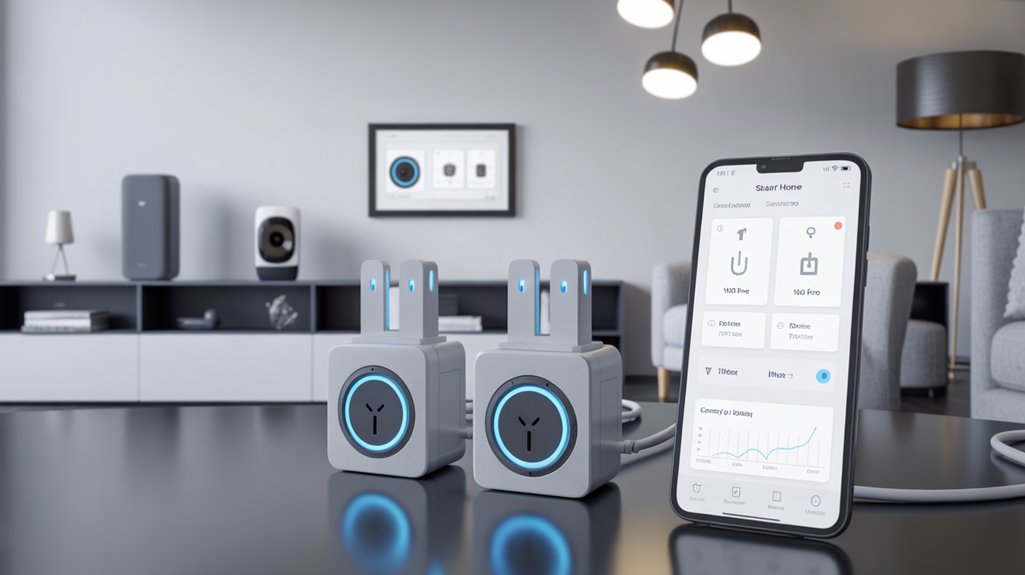
When you’re searching for the ultimate smart plug that delivers exceptional performance across all key metrics, the Emporia 15W smart plug stands as the clear winner for 2025. Its intuitive home screen displays connected devices, on/off status, and comprehensive energy management graphs that help you track consumption patterns effectively.
For dual outlet needs, the HBN smart plug excels with two independently controllable outlets in a compact design that won’t block adjacent sockets. You’ll appreciate its small footprint compared to wider alternatives like the Enbrighten model, which lacks independent outlet control and costs significantly more while delivering less functionality.
Smart plugs integrate seamlessly with voice assistants like Alexa, allowing you to control your connected devices through simple voice commands for a truly hands-free smart home experience.
Budget-Friendly Smart Plugs That Don’t Compromise on Features
You don’t need to spend premium prices to get reliable smart home automation features. The TP-Link Kasa Smart Wi-Fi Plug Mini delivers exceptional value as a budget friendly option that’s truly feature rich. You’ll get comprehensive scheduling, away modes, and timers through the intuitive Kasa app, plus seamless compatibility with Amazon Alexa and Google Assistant for voice control.
| Feature | TP-Link Kasa Mini | Premium Alternatives |
|---|---|---|
| Voice Control | Alexa, Google | Alexa, Google, Siri |
| Energy Monitoring | No | Yes |
| Premium Alternatives | No | Yes |
While it lacks energy-consumption data and HomeKit compatibility, you’re getting solid automation capabilities at an unbeatable price point. For Apple users seeking the most secure smart home experience, premium alternatives that work with the Home app offer encrypted end-to-end communication and data protection that even Apple cannot access.
Apple HomeKit and Matter-Compatible Smart Plugs for Seamless Integration
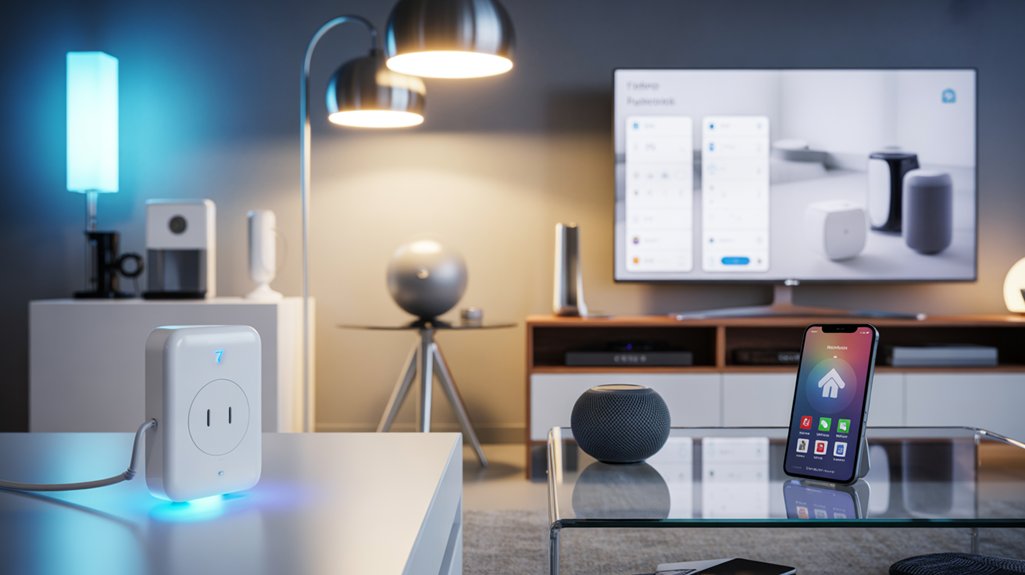
Where does Apple’s ecosystem integration truly shine in smart plug technology? You’ll find the answer in devices like the Leviton D215P-2RW, which delivers comprehensive Matter compatibility alongside native Apple HomeKit support. This sleek, slim design features a corner window indicator light and seamless Siri integration. While setup remains straightforward through the Leviton app, you’ll need to download the Leviton skill for Alexa compatibility. Matter compatibility ensures your smart plug works across multiple ecosystems without compromising Apple’s native functionality. For Apple users prioritizing seamless integration, Matter-enabled plugs eliminate compatibility barriers while maintaining the intuitive HomeKit experience you expect.
Smart Plugs With Premium App Experiences and User Interface Design
How substantially does app design impact your daily smart plug experience? Premium app reliant devices like GE Cync demonstrate how elegant UI transforms routine interactions into intuitive experiences. The Cync app’s visually appealing interface streamlines setup with built-in prompts for Alexa and Google integration, while offering comprehensive device grouping and scene creation capabilities.
Key premium app features that enhance usability include:
- Visual device status displays with real-time feedback
- Integrated ecosystem setup within single interface
- Advanced automation builders for complex routines
Beyond basic on/off controls, these sophisticated interfaces provide tutorials, guidance features, and total home automation potential, elevating your smart plug from simple remote switch to comprehensive home management tool.
Energy Management and Monitoring Capabilities Across Leading Models
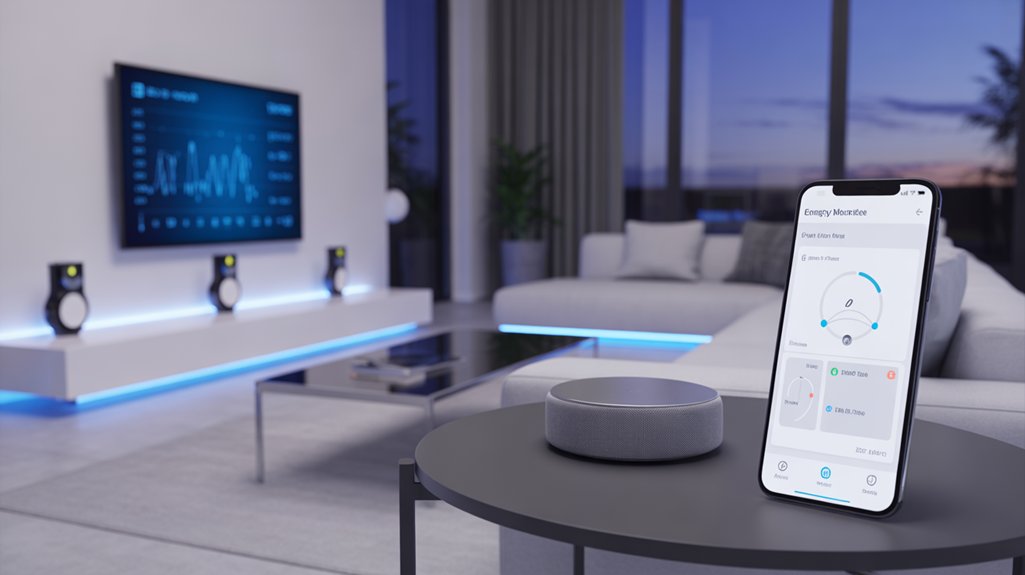
While premium apps enhance your control experience, energy tracking capabilities separate basic smart plugs from true home efficiency tools. Emporia’s 15W smart plug leads energy management with detailed consumption graphs and customizable scheduling that actually reduces your electricity bills. You’ll see real-time usage data across connected devices, enabling automatic peak-hour shutoffs and intelligent routines. Budget options like TP-Link Kasa sacrifice energy monitoring for affordability, while GE Cync balances app experience with basic consumption tracking. The key difference: monitoring features don’t save energy automatically—you must actively use scheduling and automation to achieve meaningful consumption reductions through strategic device control.
Voice Assistant Compatibility: Alexa, Google, and Siri Integration
Voice assistant integration redefines smart plugs from simple remote switches into conversational home automation hubs. You’ll find seamless compatibility varies significantly across models and ecosystems.
Amazon’s smart plug delivers native Alexa integration without additional account setup, automatically reconnecting after power outages. For dual outlet models, you can control individual outlets or both simultaneously using device names. Google Assistant and Siri support requires more configuration steps but enables similar functionality.
Amazon’s native Alexa integration offers plug-and-play simplicity, while Google Assistant and Siri require additional setup steps for comparable smart home control.
Key compatibility considerations include:
- Native integration – Amazon plugs work instantly with Alexa
- Third-party skills – Leviton requires downloading specific skills for full Alexa functionality
- Energy monitoring – Voice commands can query consumption data when supported
Choose based on your primary voice ecosystem.
Setup Process, Physical Design, and Smart Home Ecosystem Connection
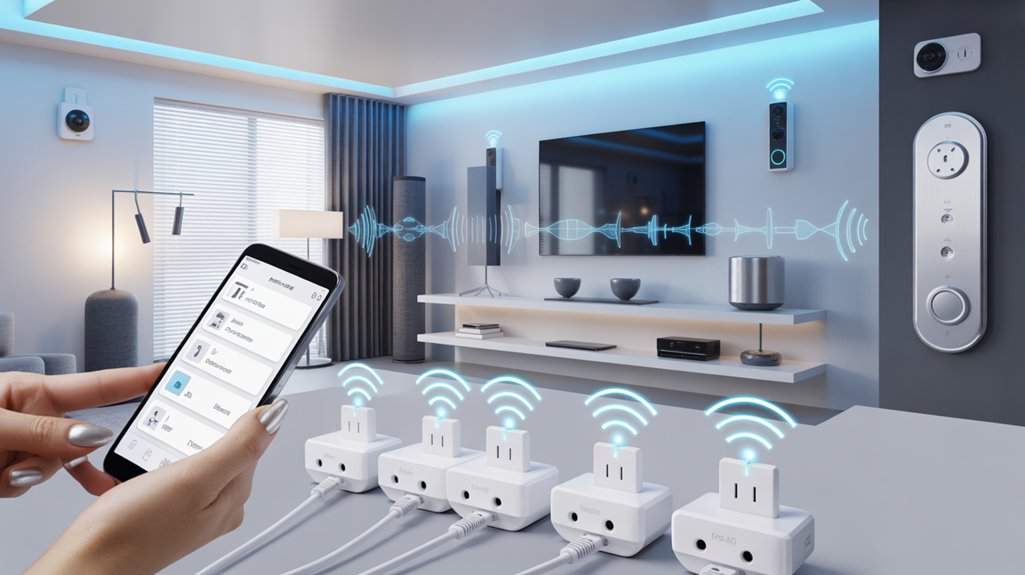
Why does setup experience matter when you’re investing in smart home automation? The setup process determines whether you’ll enjoy seamless control or struggle with connectivity issues. Your smart plug’s physical design affects outlet accessibility and visual appeal in your living space.
| Feature | Emporia 15W | TP-Link Kasa Mini | Leviton D215P |
|---|---|---|---|
| Setup Time | 2-3 minutes | Under 5 minutes | 3-4 minutes |
| Physical Size | Compact design | Mini footprint | Slim profile |
| LED Indicator | Energy status | Connection light | Corner window |
| Ecosystem Integration | Alexa, Google | Multi-platform | Matter, HomeKit |
Modern smart plugs prioritize intuitive onboarding with minimal account requirements, ensuring you’re connected quickly without technical expertise.
Frequently Asked Questions
Do Smart Plugs Work During Internet Outages or Power Failures?
Smart plugs won’t work during internet outages since they require Wi-Fi connectivity for remote control, though some maintain their last programmed state. During power failures, they’ll completely shut off and need reconnection afterward. You’ll lose scheduling and automation features temporarily. For outdoor durability and bathroom safety applications, consider models with backup connectivity options or manual override switches. Most plugs automatically reconnect once power and internet restore, but you might need to reconfigure certain settings.
Can Smart Plugs Handle High-Wattage Appliances Like Space Heaters or Microwaves?
While you might assume smart plugs can’t handle major appliances, most support 15-amp loads (around 1,800 watts), making them suitable for many space heaters and smaller microwaves. However, high wattage concerns remain valid—large microwaves, hair dryers, or electric heaters often exceed these safety limits. Always check your plug’s maximum rating and your appliance’s power draw. Exceeding capacity risks overheating, fire hazards, or device failure, so you’ll need dedicated circuits for heavy-duty equipment.
How Much Do Smart Plugs Increase My Monthly Electricity Bill?
Smart plugs themselves add minimal cost to your monthly electricity bill—typically just $1-3 annually per device. However, they can actually reduce your energy usage through automated scheduling and monitoring features. Models like the Emporia smart plug help you track consumption patterns and create efficient schedules that eliminate phantom loads from electronics in standby mode. You’ll likely see net savings rather than increased costs when you use their energy management features properly.
Will Smart Plugs Slow Down My Home Wi-Fi Network Performance?
Smart plugs won’t slow network interference on your Wi-Fi performance. Each plug uses minimal bandwidth—only transmitting basic on/off commands and status updates. You’ll typically see negligible impact even with multiple devices connected. The power draw implications are separate from network performance; plugs consume tiny amounts of electricity for Wi-Fi connectivity. Modern routers easily handle dozens of smart plugs without degrading speeds for your streaming, gaming, or browsing activities.
Can I Use Smart Plugs Safely in Bathrooms or Outdoor Locations?
You’ll need weatherproof models for outdoor placement and GFCI-protected circuits for bathroom safety. Studies show 70% of electrical accidents occur in wet locations without proper protection. Standard smart plugs aren’t designed for moisture exposure and can create serious hazards. Look for IP65-rated outdoor smart plugs with weatherproof enclosures for patios and gardens. In bathrooms, ensure you’re using GFCI outlets and keep plugs away from direct water contact for safe operation.
Conclusion
You’ve got the roadmap to transform your home into a connected hub without emptying your wallet. Smart plugs are the low-hanging fruit of home automation, delivering instant upgrades that’ll have you controlling everything from morning coffee routines to energy-hungry appliances. Whether you’re team Alexa, Google, or Apple, there’s a plug that’ll mesh perfectly with your ecosystem. Don’t sleep on Matter compatibility—it’s your future-proofing insurance for seamless device integration ahead.

